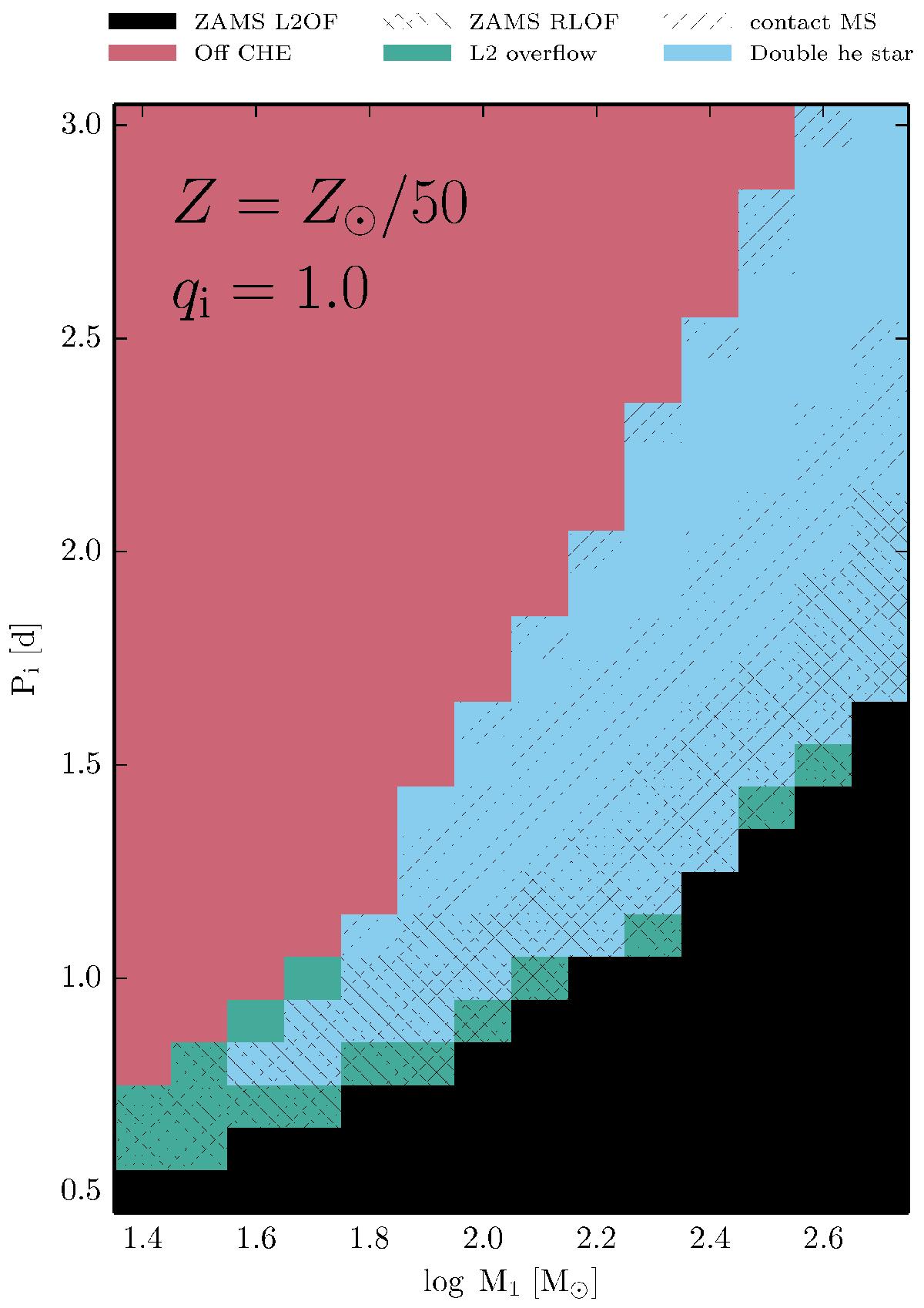Fig. 3

Example of a grid of binary systems (initial orbital period versus initial primary mass) with Z = Z⊙/ 50 and qi = 1. Models that reached a point at which the difference between the surface and central helium abundance in one of the stars exceeds 0.2 are considered not to be evolving chemically homogeneously and their calculation is stopped (pink). The region in which the initial orbital period is small enough as to have L2 overflow at the ZAMS is marked in black, while those systems that reach L2 overflow during the main sequence are marked in green. Systems marked in blue successfully form double helium stars. Single hatching marks systems that experience contact during the main sequence, while doubly hatched systems are in an overcontact phase at the ZAMS.
Current usage metrics show cumulative count of Article Views (full-text article views including HTML views, PDF and ePub downloads, according to the available data) and Abstracts Views on Vision4Press platform.
Data correspond to usage on the plateform after 2015. The current usage metrics is available 48-96 hours after online publication and is updated daily on week days.
Initial download of the metrics may take a while.


